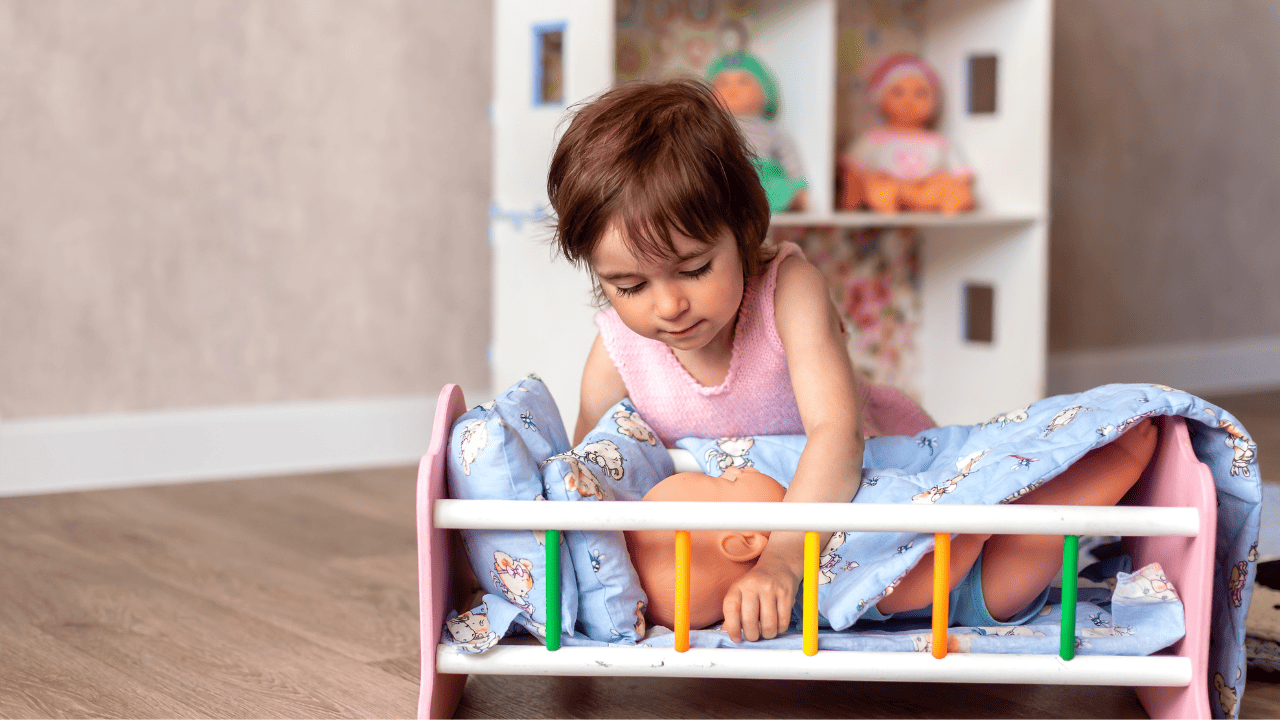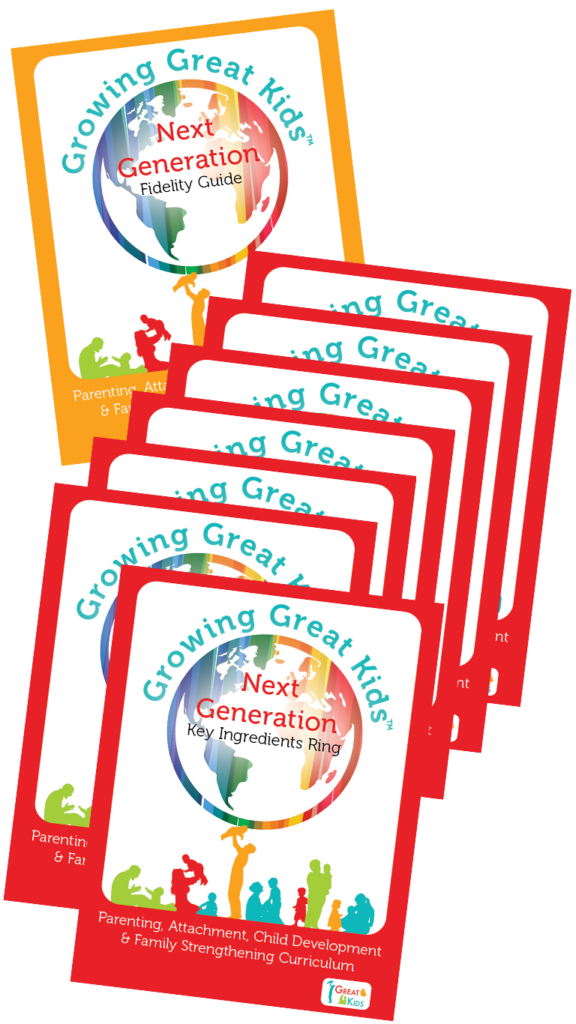 | | | | About the Author Rachel Cook has been a Product Development Specialist at Great Kids® since 2017. Her passion for helping strengthen families is prevalent in her curriculum content creation. Before joining Great Kids, she worked as a home visitor with Kentucky HANDS. She lives in Berea, Kentucky, with her husband and new baby, where she loves writing and exploring nature. Contact Rachel at rcook@greatkidsinc.net. |
If you scroll through a plethora of tucked-away photo albums beneath the staircase of my parents’ home, you’ll eventually come across the pictures capturing my fourth birthday. Among these photos, you’ll find documentation of the moment Tabby was gifted to me. Tabby was a baby doll designed to look like a newborn. I cared for Tabby in the ways I knew best, including changing their diapers, offering bottles, and bringing them along on all my childhood explorations. Some days, you could even find me “swaddling” Tabby inside a soft blanket wrapped as tight as my tiny hands would allow. After tucking Tabby snugly into their swaddle, I would rest them in the bend of my arm, pretending to be their number one protector.
Today, Tabby lives among the years of clutter piled beneath my parents’ basement stairs. Little did I know that the love I poured into that doll would one day translate into a passion that would play a part in leading me to where I am today.
Decades after Tabby was retired to a keepsake box, I found myself embarking on my first home visiting journey. It began with me sitting in a Great Kids training room nervously, absorbing new information. In this training, I was introduced to another baby doll that reminded me of Tabby.
The trainer delicately wrapped this baby in various pieces of material and secured them tightly in a cozy swaddle, much like the swaddle I once lovingly placed around Tabby. The trainer explained the swaddle represented how parents can put emotional layers of protection around their children. At that moment, an overwhelming passion fueled my heart, and I knew I was in exactly the right place.
It turns out that putting emotional layers of protection around children is one of the most valuable skills parents can possess.1,2
These layers are built over time and result from parents tuning into their kids’ needs and responding to them in nurturing ways.1,4 In other words, developing a secure attachment or strong bond with children can keep families strong and support parents in raising emotionally healthy kids.1,2,3,4 Experts say there are also five other things parents can do to promote loving childhoods for their kids.
They call these five things protective factors.1,2 They include:
- Being open to learning about loving parenting practices and child development,1
- Having resilience or the ability to manage stress in healthy ways,1
- Maintaining a support circle of friends, family, and others,1
- Asking for support with basic needs like food, housing, healthcare, etc.,1 and
- Understanding how to nurture children’s social and emotional development.1
Experts say these five factors, plus developing a nurturing relationship with children, protect kids from particular traumatic experiences.2
I also see the Protective Factors as parental strengths that bring hope. Hope for a future where children one day become adults and say with confidence their parents were their number one protectors. It brings me joy to know there are so many wonderful home visiting programs dedicated to supporting parents to wrap their children in emotional layers of protection and put these Protective Factors in place. To all of you participating in these programs, you’re rock stars! Your commitment to raising a generation of nurturing protectors is a gift to this world.
References
1. Child Welfare Information Gateway. (n.d.). Protective factors to promote well-being and prevent child abuse & neglect. U.S. Department of Health & Human Services, Administration for Children & Families, & Children’s Bureau. https://www.childwelfare.gov/topics/preventing/promoting/protectfactors/
2. Child Welfare Information Gateway. (2020). Protective factors approaches in child welfare. U.S. Department of Health and Human Services, Administration for Children and Families Administration on Children, Youth and Families Children’s Bureau. https://www.childwelfare.gov/pubpdfs/protective_factors.pdf
3. Government of the Province of British Columbia. 2019. Baby’s Best Chance Parents’ Handbook of Pregnancy and Baby Care. HealthLinkBC. https://www.healthlinkbc.ca/pregnancy-parenting/babys-best-chance 4. Zero To Three. (2016, February 22). Responsive care: Nurturing a strong attachment through everyday moments [Video]. Vimeo. https://www.zerotothree.org/resource/responsive-care-nurturing-a-strong-attachment-through-everyday-moments/


